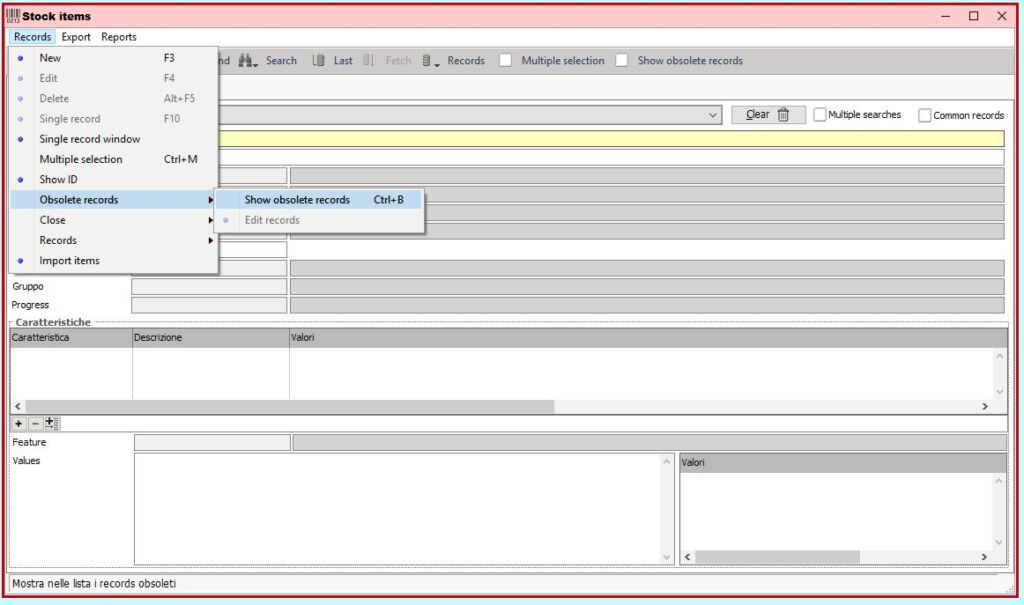 In many parts of an ERP there can be records that cannot be used any more, but still must remain in the database because thay have been used in old transaction. For example, a VAT code that doesn’t exist any more, a stock item that is not being produced or sold any more, and so on.
In many parts of an ERP there can be records that cannot be used any more, but still must remain in the database because thay have been used in old transaction. For example, a VAT code that doesn’t exist any more, a stock item that is not being produced or sold any more, and so on.
In X-Cross, every record of every table can be marked as “obsolete”, and in this way these records still exist, but they cannot be used any more.
The problem of obsolete records
Obsolete records are records of a table that cannot be used any more, but must remain into the database because they are used in transactions.

For example, let’s imagine that the VAT standard rate is changed from 20% to 22%. What can we do to prevent the old 20% to be used?
- Delete the 20% record: impossible besause it has been used in documents and accounting transactions
- Change the record VAT rate from 20% to 22%: impossible because in this case all the old transactions would be modified.
Now, it could be that in this specific table (VAT codes) a specific flag is to be used to mark the record as obsolete, but if this happens in another table without this feature alredy built in?
In nearly all the tables of a database, in fact, we maye need to have marks some records as obsolete, without a specific flag to mark the record as obsolete.
In X-Cross, there is a general machanism, not linked to a specific table. that allows every record of every table to be marked as obsolete.
The obsolete record cannot be used, that is to say connected to other tables or transactions.
Obsolete record privileges
For obsolete records, each access profile, if granted by the administrator, can have the privileges to:
- See the obsolete records in the list of records
- Use the obsolete record in transactions
- Change the status of a record to obsolete and back.